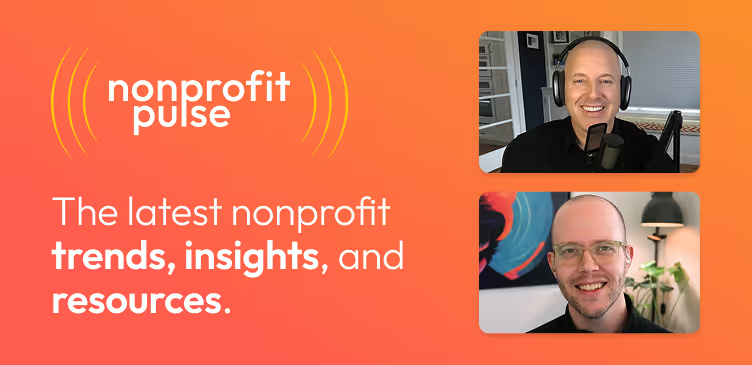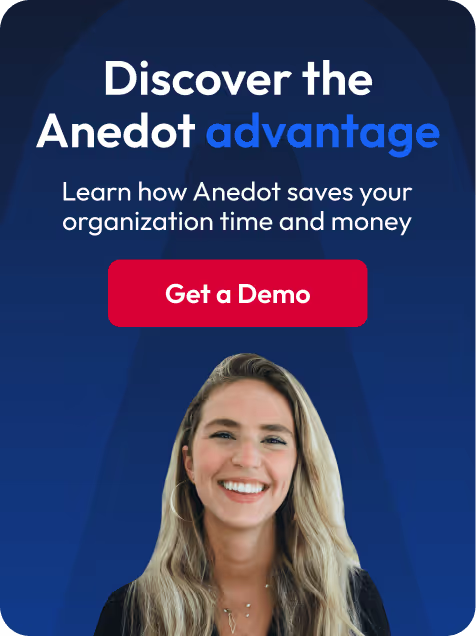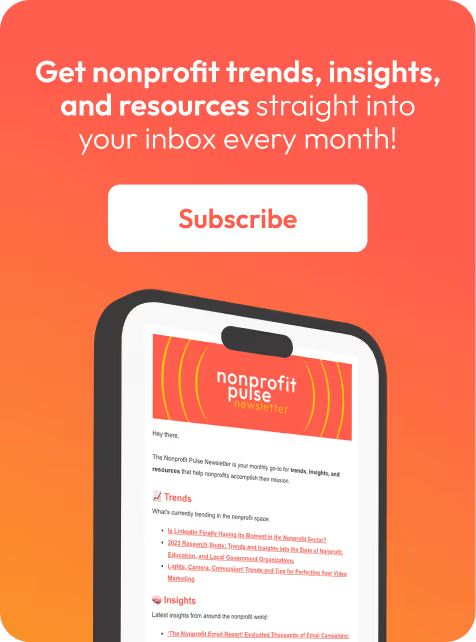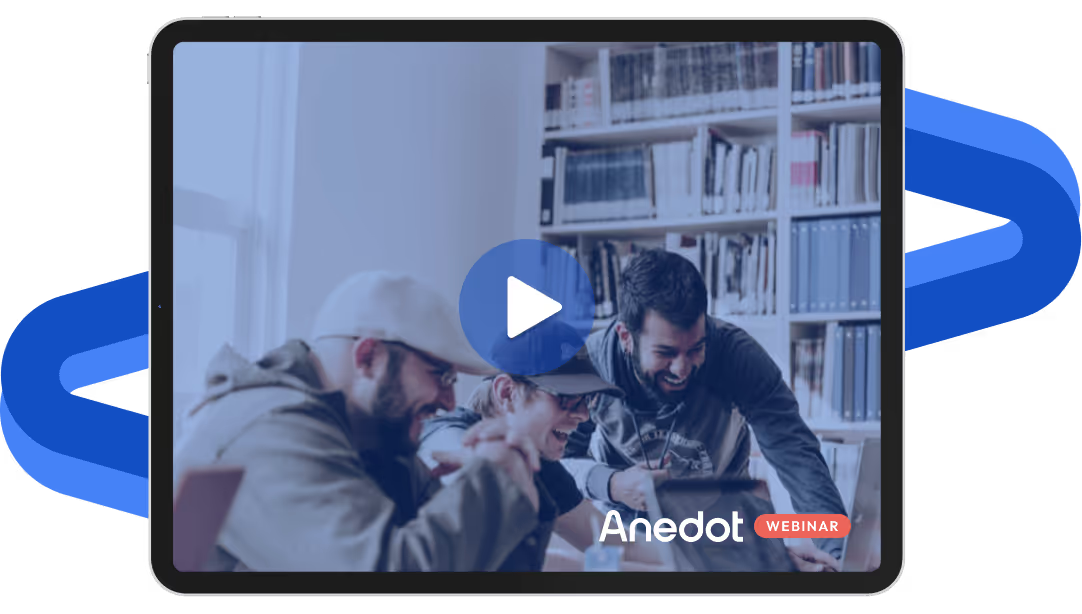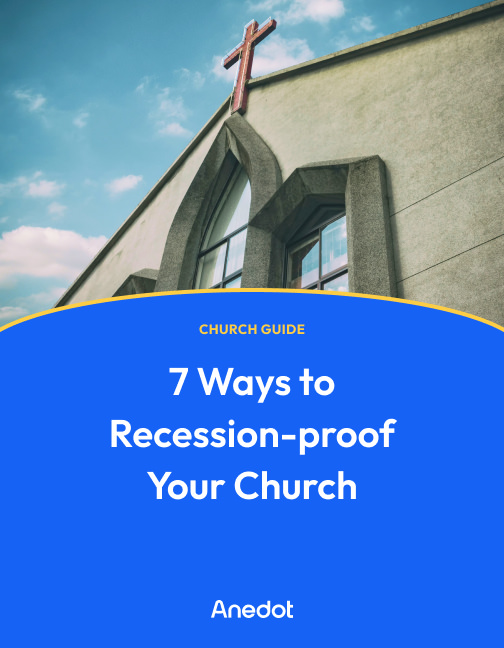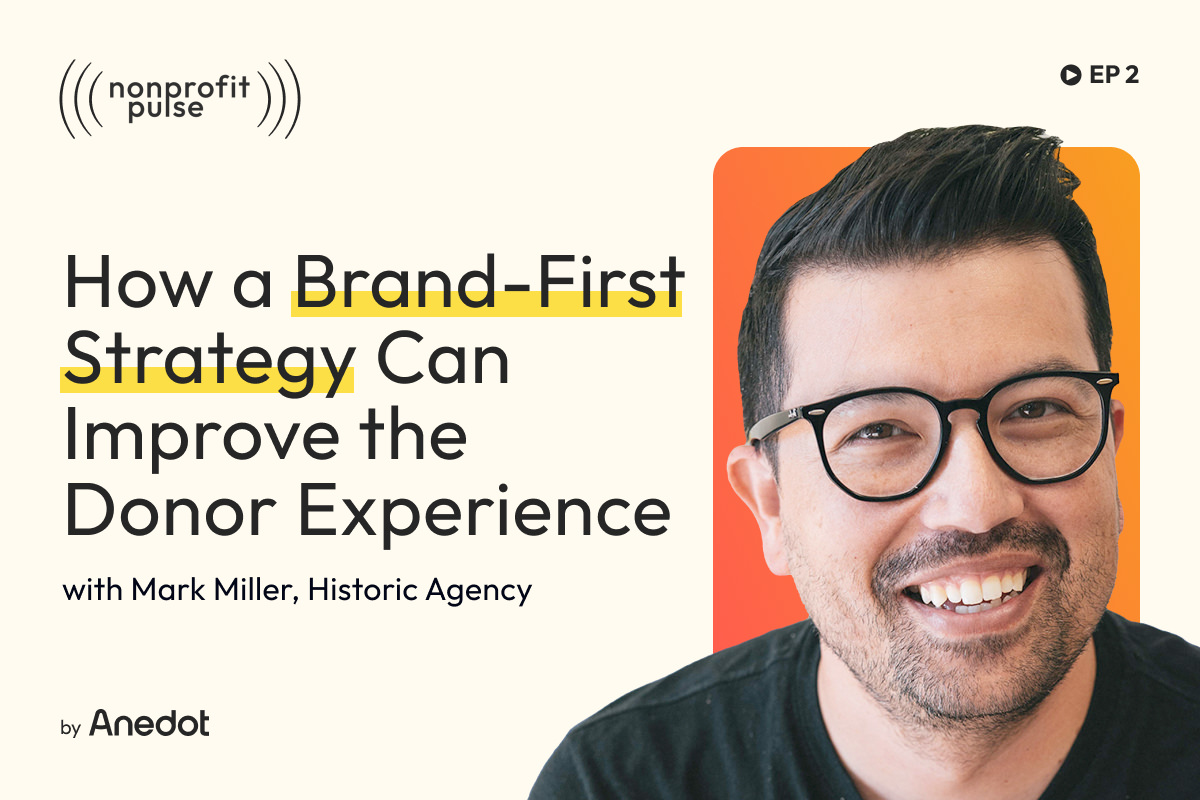Video transcript ↓
Hey, welcome back to the channel. You know, technology has rapidly changed the way we stay in contact with one another.
It's changed culture, and it's changed the expectations people have when making purchases.
Because of that, nonprofits are presented with new challenges and opportunities to connect with donors.
And sure, when it comes to fundraising, there are tried and true methods that everyone uses.
Fundraising letters, phone calls; standard stuff. But in today's age, there are so many other ways to engage with your donors.
In fact, I would say that if you're not branching out, you might be missing out.
Because we're in this progression to find more efficient and convenient ways to engage with someone, nonprofit innovation matters!
So, let's go over the 6 modern approaches on how to ask for donations.
I'm Joseph from Anedot, and let's get into it!
1. Send text messages

Let's start off with something simple, but impactful. Text messaging.
On average, Americans spend nearly 3 hours on their phone every single day and nearly half of respondents state they spend 5-6 hours.
This shows us that text messaging has become the preferred way to stay in touch with people. So why not use that when connecting with donors?
Here are three types of text messages to consider:
Direct mail fundraising texts
One, direct mail fundraising texts.
This is a text you can send to improve direct mail fundraising.
If you are sending a direct mail piece inviting someone to an event or asking them for a donation, you should also send them a text.
This is because it's more immediate, and can act as a reminder to reinforce the information in the mail.
In fact, we have an entire post on "How To Use Texting To Improve Direct Mail Fundraising" that's hosted on our blog.
Thank you texts
Two, thank you texts.
You can use text messaging to thank someone for attending an event and you can also let them know about the next opportunity to get involved.
Potential donor texts
Three, potential donor texts.
What about brand new people who are unaware of your organization? You can use text messaging to reach them!
Now, we recommend being targeted and strategic with your outreach to complete strangers, but think about this scenario.
You're a nonprofit that serves a specific community. You work with other members of the community to get a list of individuals who would be likely to support your organization but are unaware of it.
By sending them a "soft-touch" text, you can introduce your organization without coming across as overbearing.
2. Use text to give and QR codes

Next up is text to give.
Now you're probably wondering... what's the difference between text messaging and text to give?
With text messaging, you use P2P, or peer to peer, technology to send outbound texts to people who didn't opt-in to a list.
With text to give, the potential donor texts a specific keyword to a phone number and immediately receives a link to give.
Rather than being outbound, it's inbound.
Have you ever been at a conference or a rally and someone said, "Go to our website to donate?"
Typically most people will nod and then not complete their donation because it becomes this complicated process.
They need to remember the organization's URL, then need to work through the navigation bar to find the donation page, then have to pull out a credit card, and then, finally, try to process a donation.
You know, it's not the best experience.
In-person meetings and events are the optimal time to use text to give and QR codes.
Rather than asking a potential donor to remember a long URL, you're only asking them to send a quick text, or scan a QR code with the camera app on their phone.
So, if someone is close by, a QR code is the easiest way for them to access your donation page. With a QR Code Generator, you can efficiently generate trackable and dynamic donation QR Codes.
And, if they are in a crowd, then text to give tends to be the preferred method.
We have blog posts on both text to give and QR codes to learn more actionable tactics!
3. Enable cardless transactions

Next up are cardless transactions.
These are great because they accommodate people who want to donate straight from their phones.
It's also helpful for your organization if you need to collect specific details like someone's employer, occupation, or food preference.
In some ways, this trumps a credit card swiper.
You can collect more information from a donor while avoiding limitations like the number of credit card swiping devices you have available, or the number of people to help process the order.
Each potential donor has their own cell phone, and with it, their own ability to give.
A great feature that our platform Anedot offers is DonorID, which allows a donor to save their bank account or credit card on file to use for future donations.
More recently, we have also added Apple Pay and Google Pay.
Apple Pay and Google Pay allow donors to save their credit card information on their phones, so they can use it for online transactions.
Between DonorID, Apple Pay, and Google Pay, donors have plenty of ways to give directly from their phones.
4. Have thank you pages be donation pages
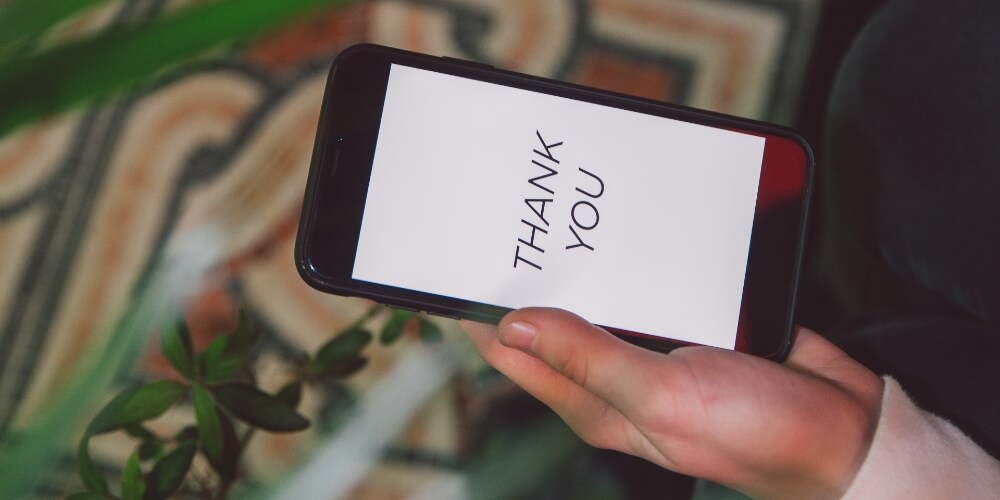
For tip 4, let's look at an often-ignored opportunity: thank you pages.
You're probably thinking: "What do you mean? Am I asking for a donation after they already gave one?"
I know that can be kind of confusing, but think of it this way.
You're likely conducting surveys, doing check-ins, and if you're involved in policy, you might be having someone sign a petition or volunteer.
The thank-you pages for these non-donation pages can turn into donations when used tactfully.
Let me tell you how this works.
So if you ask for a survey on a particular issue and someone fills it out, there's a good chance they care about that issue.
By turning the thank you page into a soft donation ask, you can dramatically increase your donations for a specific initiative.
Here's a hypothetical.
Let's say you have a community service project coming up. Your volunteers may be willing to chip in $20 bucks if they know exactly what it will go towards.
So, you can say something like, "These donations will go towards the trash bags, gloves, and other resources needed for this community service project."
Sounds like an easy ask right?
There's no pressure to opt-in, but it can give people another way to express their passion for the project.
So think of ways to turn thank you and other non-donation pages into donation pages.
And this leads us right into the next tip, personalize your asks.
5. Personalize your asks

One of the biggest mistakes we see organizations make is having a single donation page for all their fundraising efforts.
Why do you need more than one donation page you may ask?
Well, it's simple: you may have a wide variety of initiatives and potential donors. What works for one donor may not work for another.
For example, your large-dollar donors should not be seeing donation pages with $10 buttons on them.
By using multiple donation pages, you can personalize your messaging to engage with every type of donor.
When creating these different pages, all of your appeals should have brand consistency.
Now you know us, we're really big on this point.
Your donation page should have the same branding as your main website.
Also, this personalization should flow into your receipts and thank you messages.
As you create specific pages for each event or initiative, you can also create custom receipts for them.
In these receipts, you can include the date, time, location, and other important information that pertains to the event.
This is really helpful when you're trying to provide as much information as possible.
You can also explain to someone how they can check in to the event, and whether they need to print the receipt and bring it to the door or not.
Some people may not be used to participating in these kinds of events, so giving them this kind of guidance will make them feel more confident to attend events in the future.
By personalizing your asks, you will take care of a wide variety of initiatives and donors.
6. Find a partner

Lastly, find a partner. Have you ever heard the phrase "It's a team sport?"
This phrase also applies to raising money for your organization, whether you're a nonprofit, ministry, or higher education institution.
So this can look like finding a new partner from current members within your organization.
You can do this by coming up with a list of potential donors that your volunteers have a personal connection with. They could be friends or family members.
This allows you to easily partner with new donors organically because the personal connection already exists.
This can also look like partnering with other like-minded organizations, that have a similar supporter and donor base, to raise money together.
So, to raise money with other organizations that have their own tax identification numbers, you can use tandem pages.
And by using a platform like Anedot, both organizations can raise money on the same page, opening up a number of possibilities.
For example, let's say both of you help veterans in your community. You both may have cultivated a loyal donor base.
If each of your loyal supporters were asked to support not just your organization, but a like-minded one, how many do you think would choose to give?
We put that theory to the test and found that these tandem pages generate 50% more total donations than pages for a single organization.
It turns out, that people are willing to give more when presented the opportunity.
The beauty of this strategy is that once someone gives, they're more likely to give again. You can truly increase the pie of donations by working with other like-minded groups.
Closing thoughts

With these 6 tips, we know you can modernize your fundraising efforts and increase conversions.
If you found these tips helpful, comment below on which ones you're using. We can't wait to see what you post!
Thanks for watching! Again, be sure to like, subscribe, and hit the notification button for more videos like these.
Again, I’m Joseph with Anedot, and we’ll see you next time!
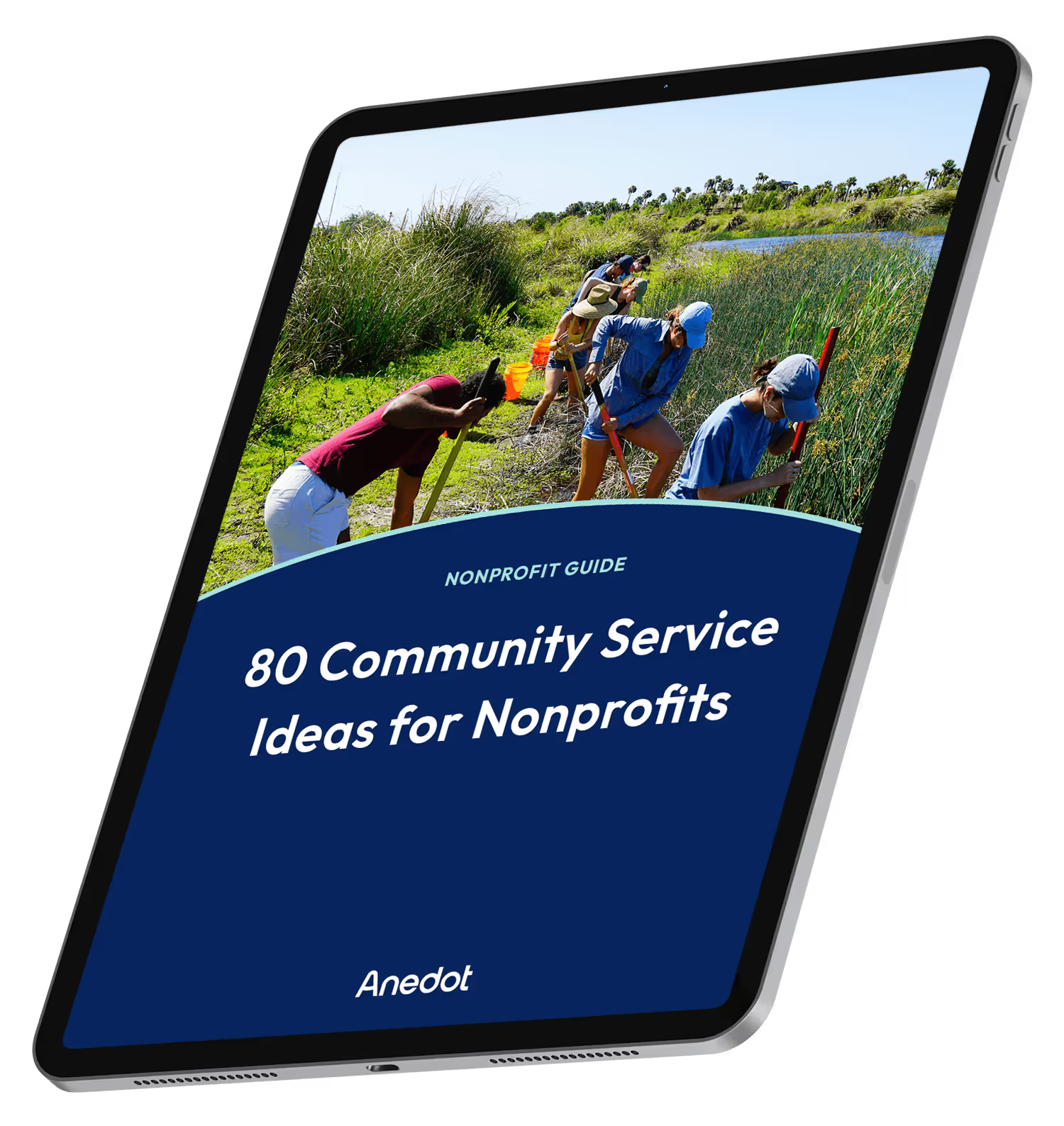
80 Community Service Ideas for Nonprofits

